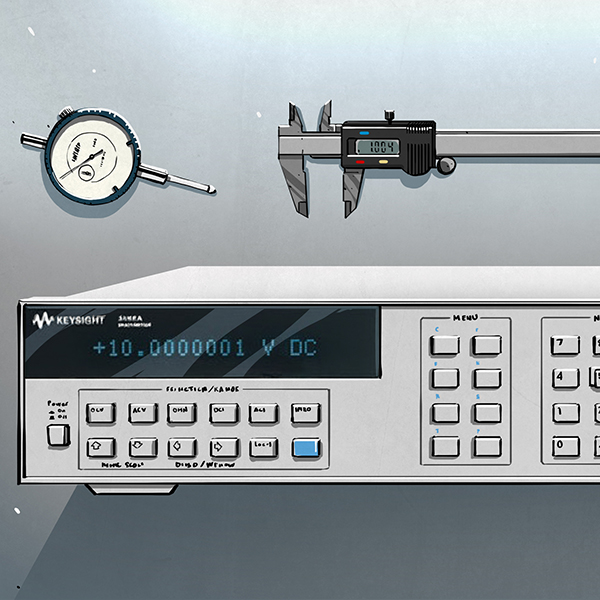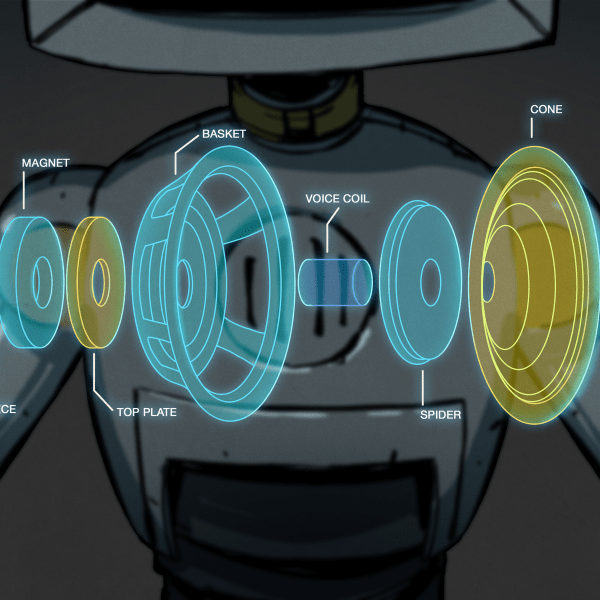
Ever wanted to be able to launch a balloon into space, track its location via GPS, take some photographs of the curvature of the earth, and recover the balloon, all for the low low cost of $150? [Oliver Yeh] sent in his teams project, Icarus, which does just that. The group of MIT students found that they could use a weather balloon filled with helium to reach heights of around 20 miles above the earth; their particular balloon achieved 93,000 feet (17.5 miles). Then, utilizing only off the shelf components with no soldering, conjured up a GPS tracker using a Motorola i290 Prepaid Cellphone. They then used a Canon A470 loaded with the chdk open source firmware to take pictures. After seeing the results of their launch, the team hopes that this could rejuvenate interests in science and the arts.















This is the coolest thing I have ever seen on hackaday (or on many other websites, trying to think of something that comes even remotely close). Thank you for posting it, and thank you to the team behind it. : )
http://www.youtube.com/watch?v=xWATd0LRA_4&feature=SeriesPlayList&p=6A63C556E8356AC8
The bbc have also done this on the cheap!
near-space balloon photography isn’t exactly new, but it’s good that hackaday is covering it :)
A few young kids from a spanish High School make it firsth
http://www.teslabs.com/meteotek08/fitxers/premsa/nota_de_prensa_ESP.pdf
Don’t they have to ask permission to FAA before releasing such balloon?
Jesus Christ who cares? There’s one million geese flying around in the same airspace, whereas this thing is spending a very short time in Class B airspace.
Take a look here….
http://www.robertharrison.org/index.php?option=com_content&task=view&id=25&Itemid=78
A good friend of mine has been doing this for the last couple of years.. he has some fantastic pictures and videos of his flights..
http://www.robertharrison.org/index.php?option=com_content&task=view&id=25&Itemid=78
It looks like the camera only took 4 photos. How lame is that?
@GengisCan: According to FAR Part 101 regulations, not if it weighs less than 4lbs.
Gah! we just launched a similar vehicle a few months ago. Via the RPI electronics club:
http://www.transistor-man.com/balloon.html
they did take some friggin amazing pictures though
-Dane
Why doesn’t the google maps or google earth team get pictures like this?
I had done this several years ago. Being on the East Coast, our prevailing weather blows anything out over the ocean; so I build a disposable one…
http://www.geocities.com/Almost_There_Weather_Balloon/
(If you get an error message about being over the hourly limit, try again later.)
Yeah, this has been around for many years, but I agree that it’s good people are talking about it with renewed interested. The equipment has come a long way in getting cheap – Check out http://www.arhab.org/ if you’re really interested.
I’m sure sending stuff up 33,000 feet makes the FAA happy
>I’m sure sending stuff up 33,000 feet makes the FAA happy
These things and the frontal area of aircraft are pretty small compared to the cubic miles airspace they fly in.
According to an MIT study, the risk of a small Unmanned Aerial Vehicle such as this being hit by a jetliner is on the order of 1 in 1 billion per UAV flight hour. See
http://members.shaw.ca/sonde/risks.htm
and
http://icat-server.mit.edu/Library/Download/205_Weibel%20R%20-%20Safety%20Considera.pdf
Add to that the fact that Pilots are trained to look out for them.
Great project, forget the FAA!!
It is easier to ask for forgiveness the to as for permission!!
Good job guys. Now, for other resources and information on balloons being launched by amateurs and being tracked, or other payload options, check out amateur radio balloon launches. For “cheap” tracking, APRS has been used quite successfully. Also consider looking up model rocketry and amateur radio, or even amateur radio satellites. You can find information on all three subjects at http://www.arrl.org or at http://www.amsat.org
Holly, crap. What kind of roaming charges did they get :)
it looks like ANDREW WIENS recently launched and just 1 upp’d these folks to the nth power
http://www.adwiens.com/projects/ensure/2/index.html
nice use of simple tech. however it is no surprise. i have a hi res pic that the brit team did ages ago as my desktop background.
Capa: Icarus… who is the fifth crew member?
Icarus: Unknown.
Capa: Where is the fifth crew member?
Icarus: In the observation room.
Ahhhhh, the naivety of youth. Cool hack but if you think it will motivate (or rejuvenate) the current batch of publicly educated “leave no moron behind” couch potatoes, you’re woefully uneducated about the real world.
The thing i most love about this is that the payload is just free to fall back to earth making a nice dent in something/one!
Fred:
Because this device is a balloon, and once launched you have no trajectory control. Plus it takes roughtly four metric asstons of time to photograph the more significant parts of the planet.
If you factor in the manpower costs, buying an old recon sat is cheaper.
absolutely no details on the actual construction of it.
andrew’s project was way cooler
so long as it weighs less than a goose, the FAA don’t care. they test engines and windows with geese, and are responsible for the safety of manned flight. ground safety is only a tangential job only if the damage arose from manned flight.
The crew from Nebraska has quite a track record in this department.
http://www.nstar.org/
This has been done so many times. Always fun. The ballon and positioning method is typically the most expensive elements ($50-$100 total for both), most other parts can be found lying around. Components typically: Weather Ballon, sun/cold shielded box, string/wire, a micro controller or timer and sensor circuit, 9 v battery, simple control circuit, cheap disposable camera, or digital camera for better picture quality, parachute, gps/triangulation positioning (probably most difficult part if any). Always call FAA just incase, don’t want to be the one to blame for an aircraft falling out of the sky. (;
Any device “capable of actively or passively sensing the Earth’s surface, including bodies of water, from space by making use of the properties of the electromagnetic waves emitted, reflected, or diffracted by the sensed objects” needs a fucking license from the NOAA under the Land Remote Sensing Policy Act of 1992.
Shut up. It’s a little balloon in one million square miles of space, the vast majority spent above cruising altitude. There are one million geese for each hobbyist balloon.
@grovenstien It was on a parachute. If you view the GPS track of it on Google Earth you can see just how long it took to reach the ground and the distances it floated when it started hitting wind.
I just took a look at the other projects that have done the same thing, and I think the most amazing thing about this one is the fact that it was done with incredibly simple materials. Pretty much a camera, a cellphone, a Styrofoam cooler and a balloon… No soldering or anything. The simplicity of it is what makes it feel like it’s so in reach for people to do on their own rather than requiring the dedication to build a PCB or make your own devices.
Just about as cool as every kid who buys an SLR and takes ~10000 pictures of the moon with it the first full moon. The SAME pictures 1000000 ppl have taken before. :P
>Any device “capable of actively or passively sensing the Earth’s surface, including bodies of water, from space…”
A balloon couldn’t possibly get to space under it’s own lift, “space” is way higher. The physice just won’t allow it.
jussi-
you’re being kinda harsh, aren’t you? what was the last thing you built and when?
>I’m sure sending stuff up 33,000 feet makes the FAA happy
HRpuffnstuff;
These things and the frontal area of aircraft are pretty small compared to the cubic miles of airspace they fly in.
According to an MIT study, the risk of a small Unmanned Aerial Vehicle such as this being hit by a jetliner is on the order of 1 in 1 billion per UAV flight hour. See
http://members.shaw.ca/sonde/risks.htm
and
http://icat-server.mit.edu/Library/Download/205_Weibel%20R%20-%20Safety%20Considera.pdf
Add to that the fact that Pilots are trained to look out for them.
“New” huh? This has been done for decades already by amateur radio guys. I used to go chase them back in the early 90’s. :-)
This is laaaame. What a bunch of losers, going out and doing something that so many other people have done, only at extreme low cost with simplistic construction requirements. I build cooler stuff in my sleep every night.
Jaded;
Well, keep dreaming then.
I learned a lot by actually doing it (not just thinking about doing it) and that made it more than worthwhile.
Did this about 6 years ago.
http://spacegrant.colorado.edu/
We actually sent rovers and science experiments up.
Hello!
please look:
http://www.copernicus-project.org
this is my stratosferic capsule
You can also see the short movie from burst moment of copernicus project balloon.
http://www.youtube.com/watch?v=EwPNp2fKgIs
@ David:
Thanks for bringing up SpaceGrant. Was scouring the comments looking for a mention.
@ Trolls:
Yes, this has been done a LOT before. HOWEVER. It’s projects like this that give students a chance to learn by doing.
Secondarily, with regard to SpaceGrant specifically, its projects like this that get people employed once they graduate. Or, in the case of a friend and fellow classmate, an internship with NASA that has now turned into a full time position.
Knock projects like this all you want; the results for students are far too beneficial to be reduced in importance by your cries of “unoriginal” and “Arduino”…
I was looking for something completely different,got your page Pictures from space for $150 – Hack a Day and found it Interesting.Nice Post on arrow electronics…
where do these baloons come from ? is there a web site that sells them or do they make them ?
add platform
Launch rocket
profit?